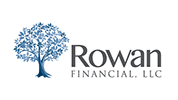96% of Stock Returns are Pretty Boring
I love looking at historical data for the returns of various asset classes and using this data to govern how I invest my money and invest money for my clients.
Professor Aswath Damodaron at NYU’s Stern School of business maintains records of the returns of various asset classes starting in 1928. You can find that info here —https://pages.stern.nyu.edu/~adamodar/New_Home_Page/datafile/histretSP.html
Among the safest asset classes are 3-month T-Bills. If you had invested $100 in T-Bills in 1928, you would have accumulated $2,249 by the end of 2023. On the surface, this sounds pretty fantastic; however, it’s more or less just keeping up with inflation. That same $100 in 1928 is worth $1,773 in inflation-adjusted terms today.
When we look at individual stock returns over this period, it is striking how many duds there are either in terms of being outright losers; or having returns that don’t do much better than the lowly T-Bill.
Hendrik Bessembinder of the WP Casey School of Business looked at the performance of 26,000 US-based stocks from 1926-2019 in this study –https://pages.stern.nyu.edu/~adamodar/New_Home_Page/datafile/histretSP.html
He found that the bottom 96% of those 26,000 companies, when looked at as a group only managed to match the returns of 3-month T-Bills. The small 4% sliver of firms (1,040 companies over a 95 year period) explained all excess returns in the stock market above and beyond the returns of T-Bills.
Put another way – for every stock we can think about investing in, we only have a 1 in 25 chance of picking one that’s in that top group that drives excess returns.
So, we might say to ourselves, “Well, surely the stock picking experts with teams of researchers must be able to do this well and pick the winners more often than not, right?”
Nope.
If we look at Lipper Data, only 35% of active fund managers beat their respective benchmark over the last 15 years and 65% have underperformed it.
So what does this mean for us as individual investors? It’s boring, but index funds really are a great, low, cost way to know that you are consistently investing in that top 4%. And the beauty of this strategy is that cap-weighted indexes continuously readjust to allow you to pour more money into the companies that are succeeding and less money into the companies that are doing poorly.
(Full disclosure – I do have some actively managed funds in the portfolios that I recommend to my clients. These choices are based on looking at long term (10+ year data) and determining that these managers consistently beat their benchmarks.)
Investing in individual stocks is OK – but I recommend that you do it with a small, speculative portion of your holdings – say no more than 5-10% of your total portfolio.

